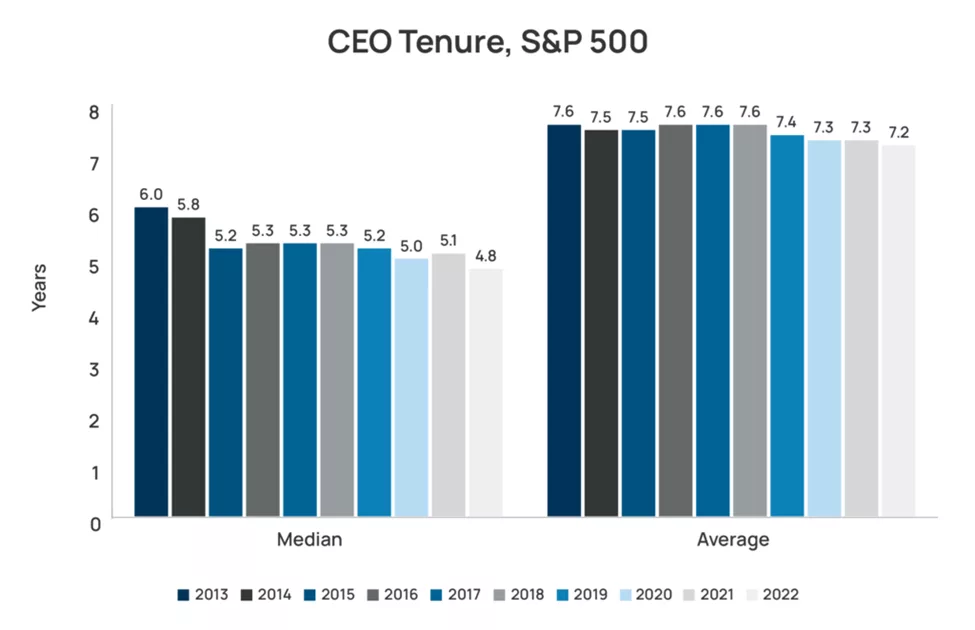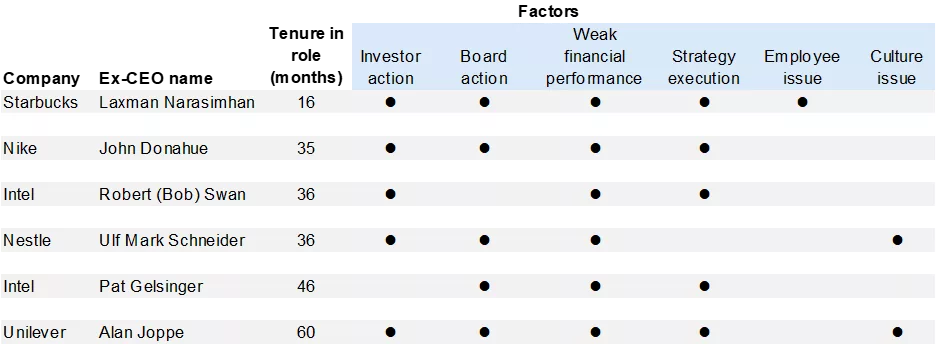Since the advent of the digital age, society has undergone a profound transformation, driven largely by the influence of social media.
As a by-product of widespread social media adoption, attention spans have noticeably shortened—a trend expected to persist, as evidenced by the growing popularity of apps like TikTok, which recently surpassed 1.5 billion users[1]. This shift is now extending into the business world, creating disruptive challenges that leadership teams must regularly assess and adapt to in order to remain competitive.
The concept of “TikTokisation” captures the growing trend toward instant gratification, where businesses and their leaders face increasing pressure to deliver rapid, short-term results. The traditional emphasis on patience and long-term business development is giving way to the rising and often impatient demands of stakeholders. This shift affects not only CEOs but also the broader C-suite and their leadership teams, who are further influenced by the decreasing tenure of CEOs in their roles.
In this article, we lay out some of the behaviours that leadership teams should adopt as they assume new roles.
Median and average tenure over the last decade (Graph 1)

CEO tenure has been steadily decreasing over the past decade
The median tenure dropped from 6 years to 4.8 years between 2012 and 2022[2], and the first half of 2023 alone saw over 1,400 CEO departures, a 50% increase compared to 2022[3].
McKinsey & Co. analyzed the CEO role at the top 1000 companies in the world for the past century and concluded that of the 2,400 individuals who occupied that role, fewer than 1,000 CEOs had lasted more than six years in those companies[4].
CEOs in certain sectors, such as retail, have been more significantly affected by the rapid shortening of tenures compared to those in other industries. As evidenced by the case of Laxman Narasimhan, who was ousted from Starbucks after only 16 months, businesses are now more likely to make rapid leadership changes if the expected results are not achieved quickly.
The recent example of the Canadian province of Alberta turfing the entire Board and most of the senior management team of its sovereign wealth fund, Alberta Investment Management Corporation (AIMCO), is seen as another episode of stakeholder intervention.
In the past, CEO tenures were generally longer, and a period of adaptation was expected. Today, however, the increasing impatience for immediate success from investors, employees, and the public can shorten a leader’s reign dramatically.
Analysis of potential factors driving CEO transition (Table 1)

Broader trends that may shorten C-suite tenure in future
- Stakeholder demands: Employees, particularly after the pandemic, are demanding more from their employers—flexibility in work-from-home policies, wage pressures in line with inflation, better benefits, and enhanced work culture. The recent uptick in union activity and strikes further emphasizes the growing need to balance employee expectations with corporate goals.
- Consumer expectations: Consumers are now more likely to abandon brands that fail to meet their immediate needs or align with their values. With the advent of online shopping and the shift to instant feedback mechanisms (like social media), customer loyalty is harder to cultivate and maintain.
- Regulatory pressures: The increasing focus on ESG (Environmental, Social, and Governance) and DEI (Diversity, Equity, and Inclusion) policies is reshaping corporate behaviour. CEOs must navigate these complex, often conflicting demands from various stakeholder groups.
- Geopolitical events: From wars to elections, these events can upset well-laid plans and targets requiring fast pivots and an agile management team that will quickly respond. CEOs need to anticipate events and develop contingency plans to respond quickly, or risk getting submerged by the consequences of those events.
- Technological transformation: AI and digital innovation are creating both opportunities and challenges. C-suite executives must lead organizations through these transitions, all while ensuring that business models remain competitive and sustainable.
Remedies and preparations for C-suite executives
To adapt to these pressures and reverse the trend of shortened C-suite tenures, businesses must re-evaluate their strategies and leadership approaches. Here are some key considerations:
- Decision-making needs to be swift and strategic: Senior executives must make quick, well-informed decisions, balancing long-term goals with the need for immediate action requirements. Boards should ensure that management teams have the tools and support needed to make fast, data-driven decisions.
- Stakeholder engagement and expectations: Understanding and engaging with all stakeholders—including employees, customers, investors, and regulatory bodies—is critical. What are the key needs and expectations from each group? What are the needs and expectations the company has for each group?
Developing a strategic roadmap that balances these competing interests can set the tone for longer leadership tenures.
- Multifaceted strategic planning: In a rapidly changing environment, historic one-size-fits-all long-term strategy may no longer suffice. CEOs and boards should create flexible, multi-pronged strategies that allow businesses to pivot as needed, addressing issues like AI (Artificial Intelligence) integration, ESG concerns, and changing consumer habits.
- Culture is a strategic asset: Organizational culture often dictates how effectively change can be executed. CEOs and their leadership teams must ensure that the company culture supports innovation, accountability, and adaptability. If necessary, evaluation and transformation of the corporate culture should be an enhanced part of the leadership mandate.
- Enhancing execution monitoring: Setting clear, actionable objectives through tools like OKRs (Objectives and Key Results) can help organizations maintain focus and ensure that leadership transitions are supported by clear, measurable goals.
- Communication is key: Transparent and continuous communication with all stakeholders is more important than ever. Leadership needs to find ways to deepen engagement with their stakeholders. This builds confidence and helps everyone buy into the organizations’ missions, goals and values. The expectations for C-suite to provide regular updates on business performance, ESG efforts, and other key initiatives are growing, and communication strategies must evolve accordingly.
If you or your leadership teams are feeling stuck or overwhelmed, there are ways to begin the process toward change:
- Talk openly with your board/leadership teams and reflect on how well you feel you are currently considering these changing forces.
- Consider brining in experts who bring insights and ideas that your current team may be overseeing and who can provide objective unbiased guidance for change.
Be intentional in your efforts and get ahead of the curve. Identifying and driving change is often one of the most challenging exercises an organization can undertake. However, approaching this from a position of strength is far easier than trying to recover after being overtaken by events.
In conclusion, the “TikTokisation” of culture—characterized by a focus on instant gratification—is redefining expectations for the C-suite and contributing to shorter leadership tenures. To thrive in this evolving landscape, C-suite executives and boards must prioritize rapid decision-making, transparent communication, and an emphasis on agility, culture, and stakeholder management.
By doing so, organizations can not only mitigate the risks of leadership turnover but also harness these pressures to drive innovation and long-term success.
Sources
[1] Statistica, “Global social networks ranked by number of users”, April 2024
[2] Chen, Joyce. “CEO Tenure Rates”, Harvard Law Forum on Corporate Governance, August 2023
[3] Constanz, Jo. “CEOs are leaving their jobs in record numbers in what is the executive suite version of the Great Resignation”, Fortune, October 2023.
[4] McKinsey & Co. “McKinsey Guide To Excelling As CEO”, October 2023




